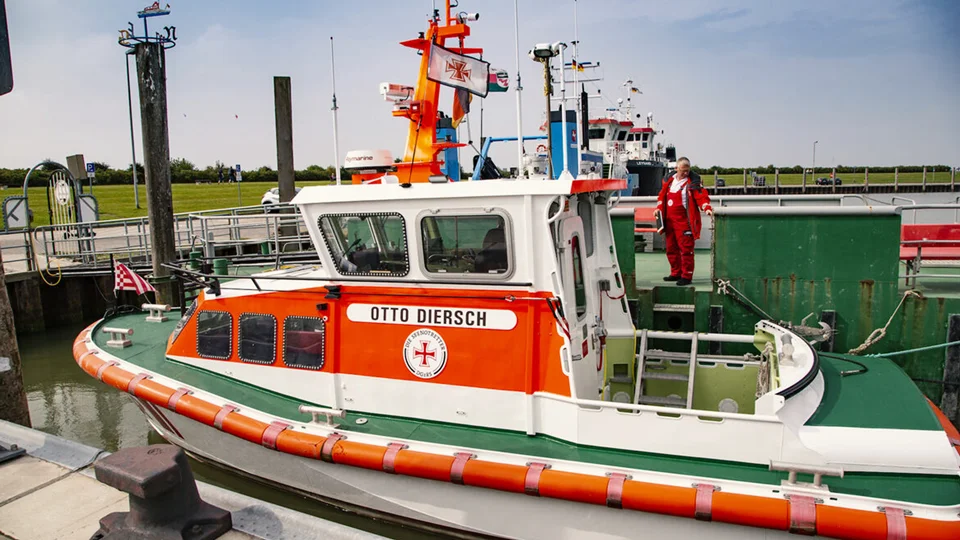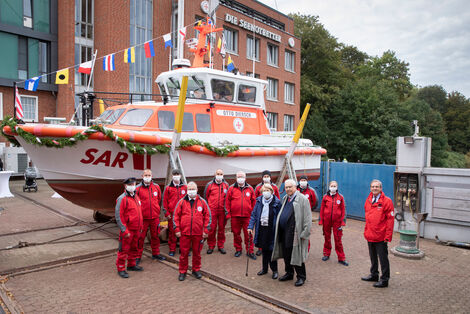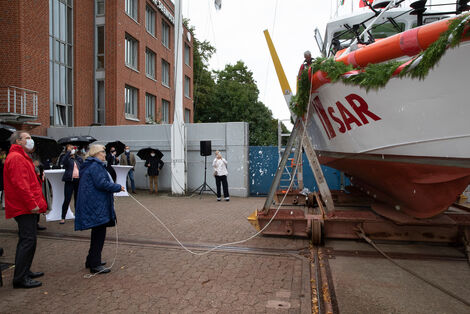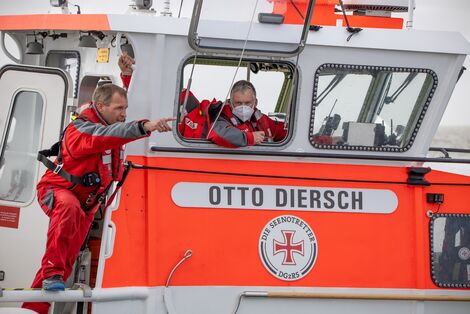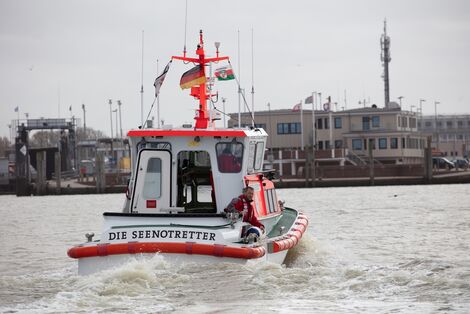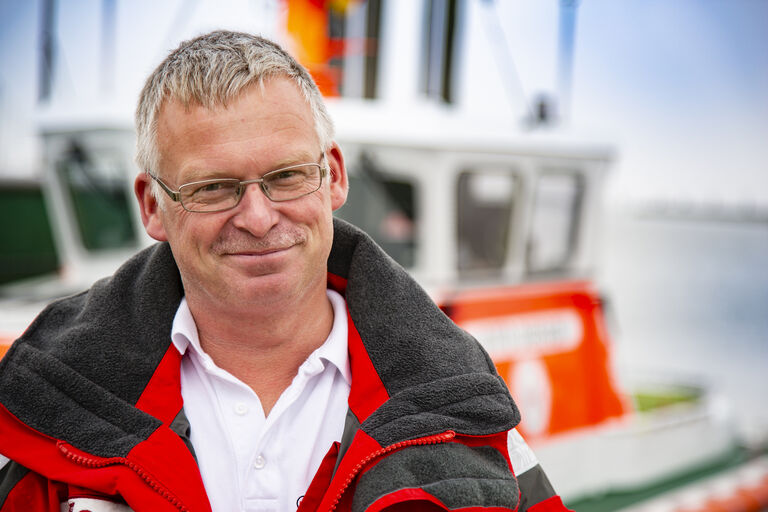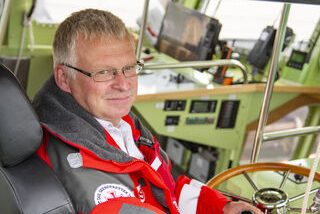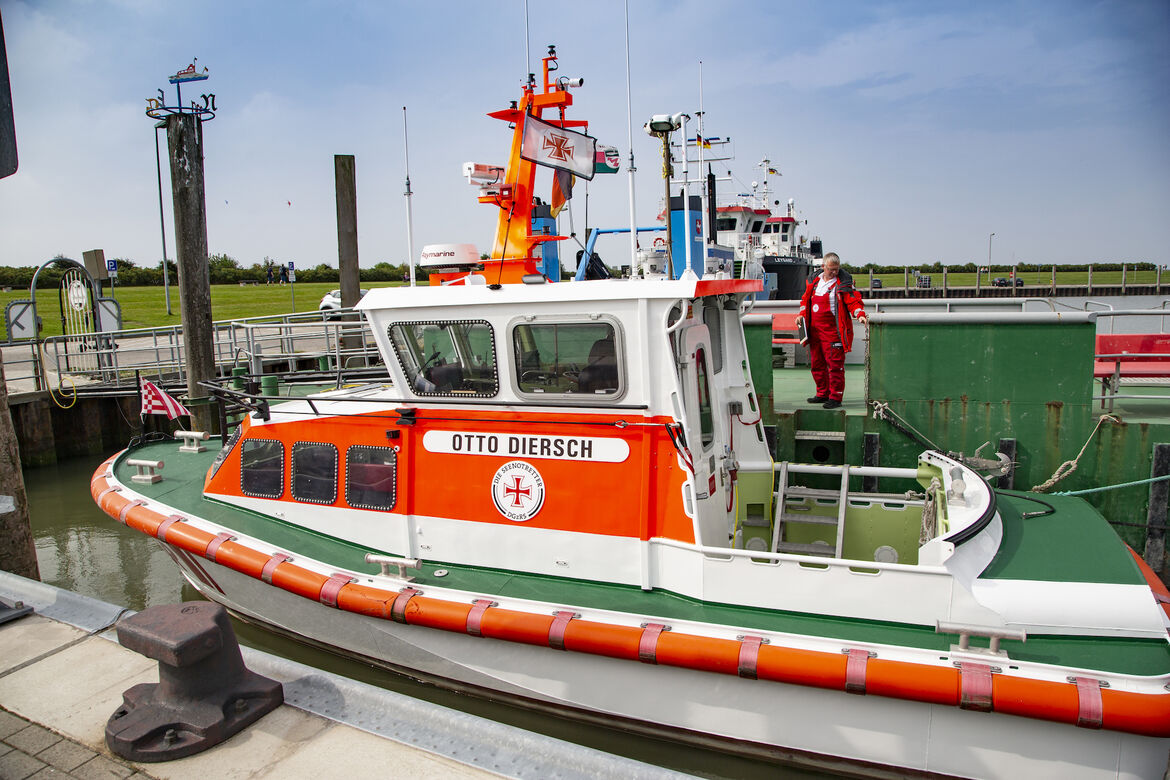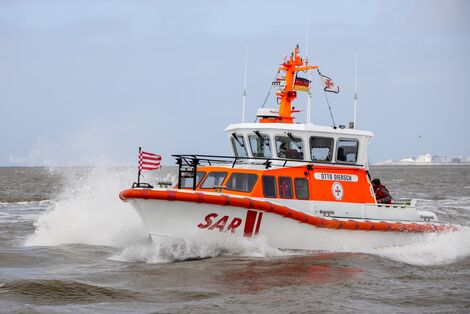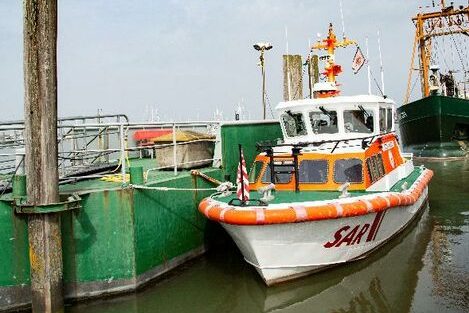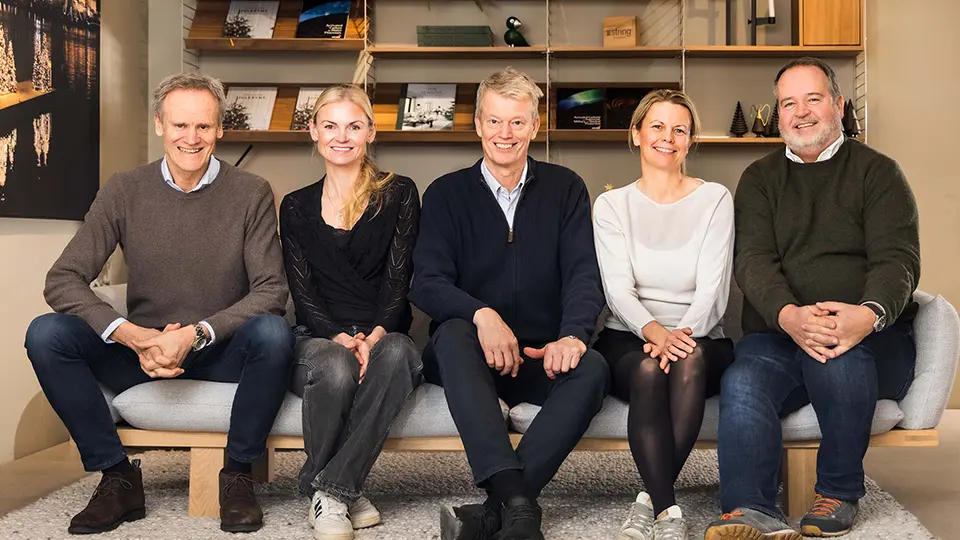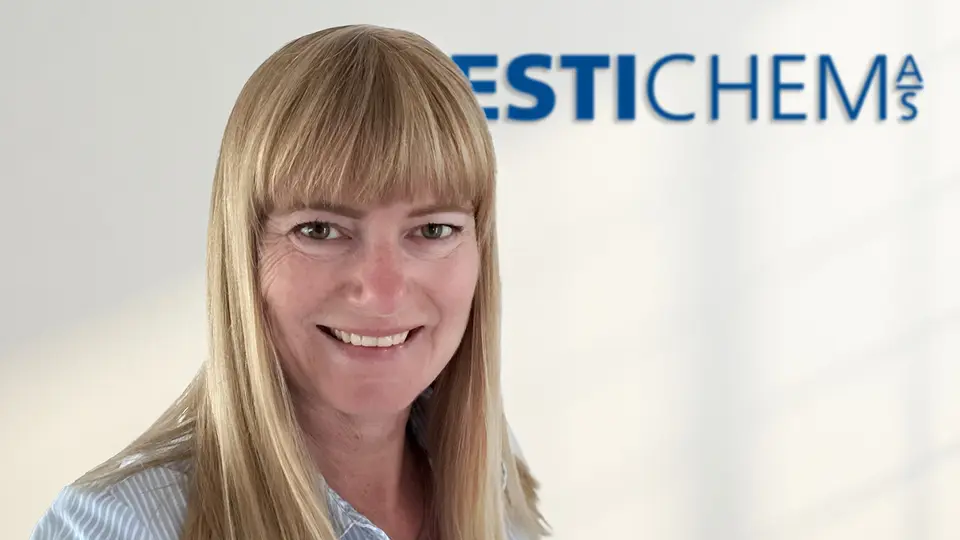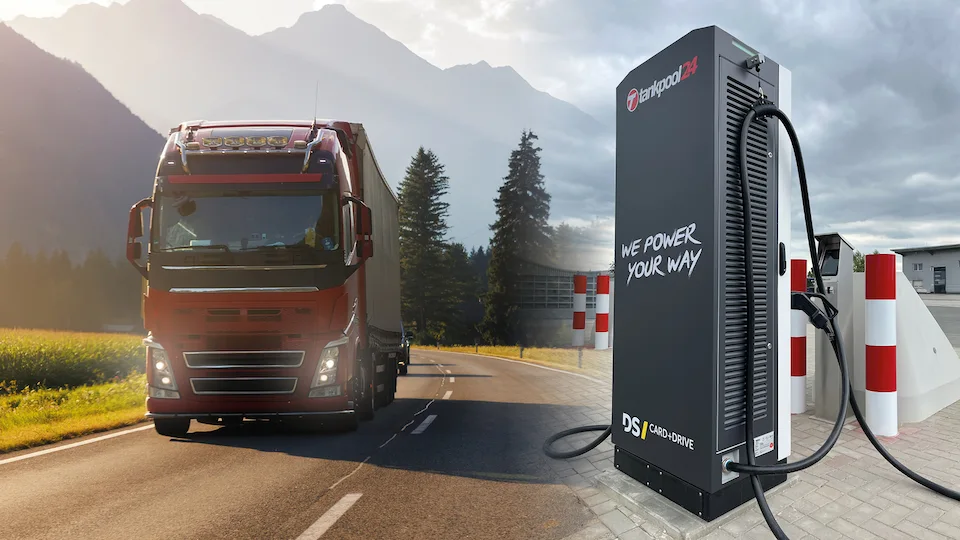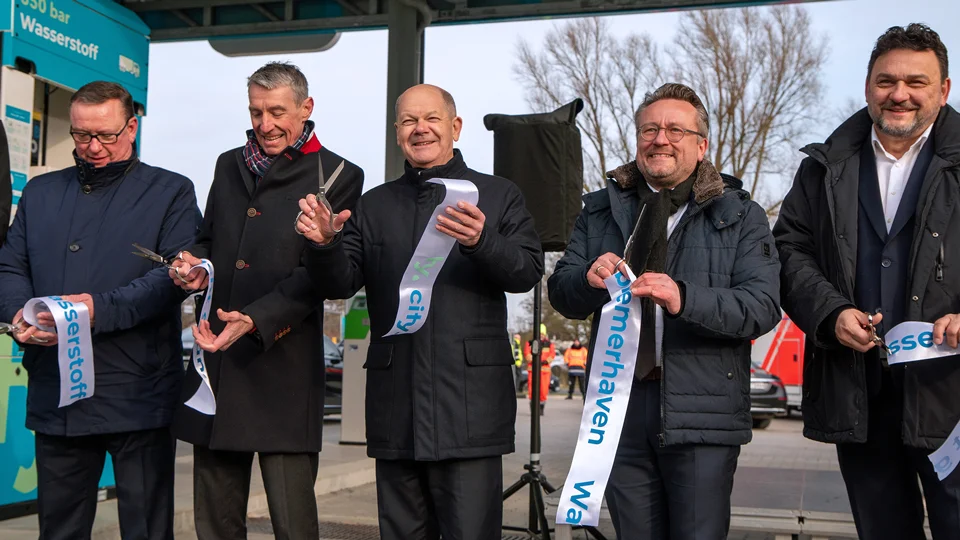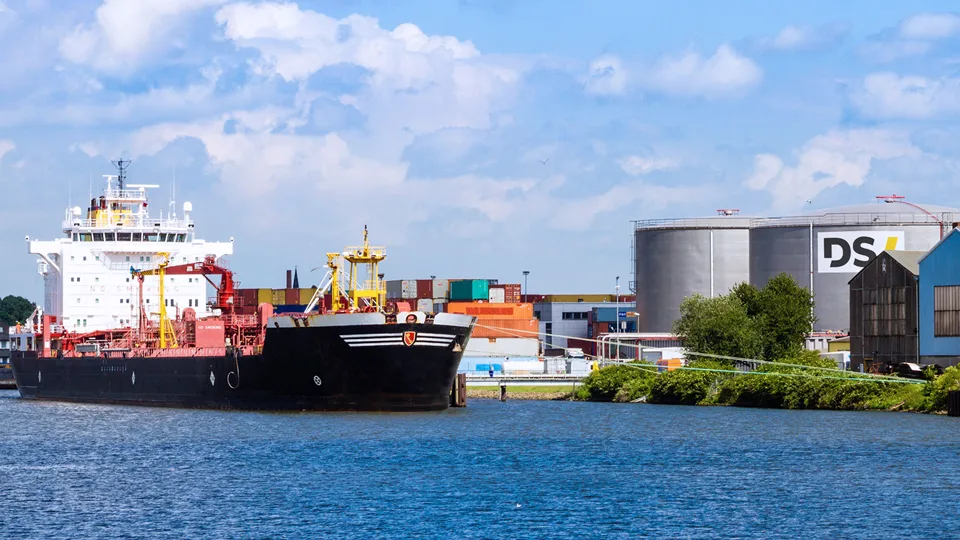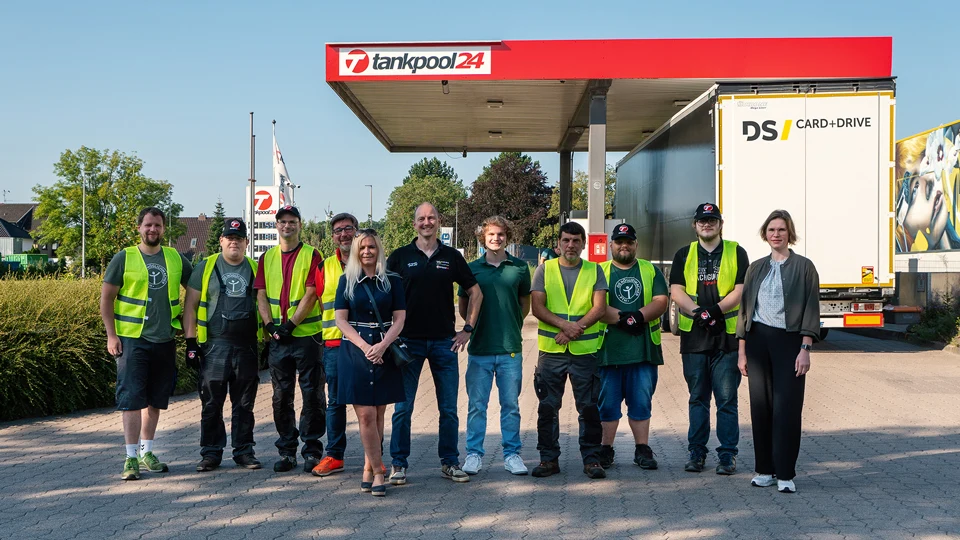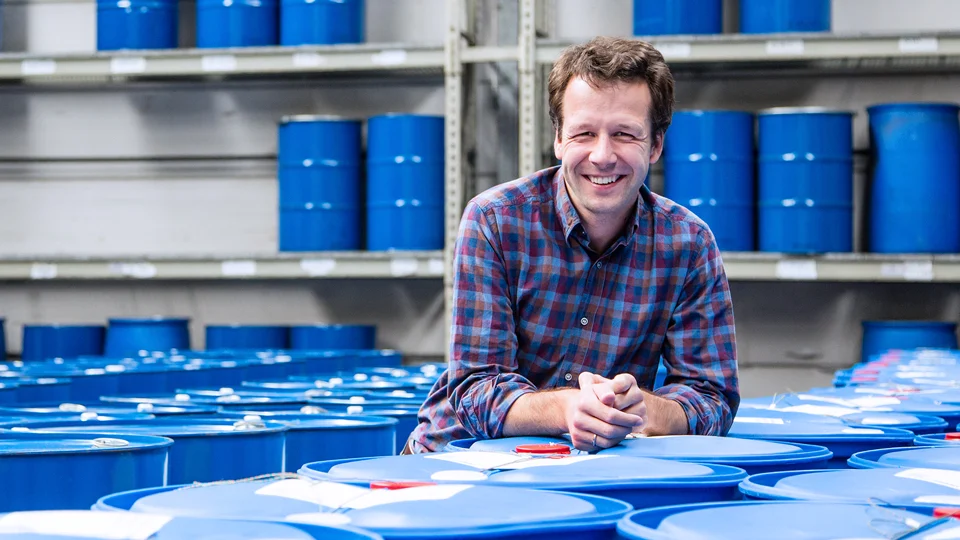At the ship christening on October 5, 2020, Ingeborg Karstedt handed over the sea rescue boat OTTO DIERSCH with the words, “I wish you always a good journey and a safe return home.” She then added, perhaps a bit wistfully, “Take care, my boy.”
The 94-year-old godmother is the daughter of our company founder Otto Diersch, in whose name the Karstedt family donated a sea rescue boat to the German Maritime Search and Rescue Service (DGzRS) for Diersch & Schröder’s 100th company anniversary.
“Like a family, the crew of a sea rescue boat experiences great joy and deep sorrow during their missions,” said Bernd Karstedt, grandson of the company founder, about his family’s commitment. “Nevertheless, the sea rescuers never lose hope and know that it is always important to venture out on a mission again. We are impressed by this. This attitude aligns with our family’s values.”
The Baptism of Fire
On October 5, 2021, the OTTO DIERSCH has been in service for one year. We wanted to know how the new sea rescue boat is performing. From the DGzRS, we learn that the OTTO DIERSCH successfully completed its first missions just two weeks after its christening:
“Volunteer coxswain Marcus Baar was just having dinner when his service phone rang at around 6:10 PM. On the line was the captain of the shrimp cutter ‘Roswietha’. He and his deckhand urgently needed the help of the sea rescuers from Norddeich. After a piece of the net became entangled in the propeller, they were drifting helplessly towards a sandbank about five nautical miles (around nine kilometers) north of their home port Norddeich with the tide receding. Marcus Baar reacted immediately, as a fisherman himself, he knows the danger of such a situation. Shortly after the alarm, he and two colleagues set out with the newly christened sea rescue boat OTTO DIERSCH to assist the distressed vessel.
When the volunteer sea rescuers arrived on the scene twenty minutes after the call, the nearly 19-meter-long steel cutter had already run aground on the sandbank. They quickly established a line connection and pulled the ‘Roswietha’ into deeper water with the combined force of the 380 HP engine of the sea rescue boat OTTO DIERSCH. With their quick reaction, they prevented worse from happening. Afterward, the sea rescuers towed the shrimp cutter with the two fishermen on board back to Norddeich in southwesterly winds of force 5 on the Beaufort scale (up to 38 km/h).”
Like all units of the sea rescuers, the new sea rescue boats are designed as self-righting vessels and are therefore extraordinarily seaworthy, allowing rescue operations in any weather and sea conditions. The powerful ship diesel engine is not only a reliable propulsion but also gives the boat enough power to tow larger ships out of danger zones. With a shallow draft of 0.96 meters, the boats are ideally suited for shallow water operations in the Wadden Sea. Where the OTTO DIERSCH can no longer sail, one can practically walk.
Self-Righting System
Should the lifeboat actually capsize, the self-righting capability ensures that the sea rescuers have a safe platform available to avoid being in mortal danger themselves. Rescuing others is then likely no longer an issue. At the same time, the self-righting capability ensures high seaworthiness during operations. However, the connection between capsizing and operational readiness should not be drawn so causally.
The sea rescuers of the German Maritime Search and Rescue Service (DGzRS) in brief:
- 55 stations between Borkum in the west and Usedom in the east
- About 60 sea rescue cruisers and boats
- 1,000 sea rescuers, more than 800 of whom are volunteers
- Ready for action in all weather conditions, around the clock
- About 2,000 missions per year in the North Sea and Baltic Sea
- Coordinated by the MARITIME RESCUE COORDINATION CENTER BREMEN of the DGzRS
- About 85,600 people rescued since its foundation in 1865
- Financed exclusively through voluntary contributions, without tax money
- Donation account: IBAN: DE36 2905 0101 0001 0720 16, BIC: SBREDE22, Sparkasse Bremen
More information: www.seenotretter.de, Email: info@seenotretter.de
About 15 volunteer sea rescuers at the Norddeich station are ready for action with the OTTO DIERSCH at any time. Their area of operation is the Wadden Sea between the East Frisian mainland and the offshore islands of Juist, Norderney and Baltrum. “Ten minutes after the alarm, at least three to four volunteers are at the station, and we set out after 15 minutes at the latest,” reports Marcus Baar. Therefore, it is also important that the volunteer sea rescuers come from the immediate vicinity or work near the harbor.
As the foreman, it is Baar’s responsibility to ensure that, despite vacation and working hours, there are always enough volunteer sea rescuers available to go out in case of emergency. No easy task, as he himself is often at sea for days as a fisherman on a mussel cutter – but then of course has appropriate representatives. “The be-all and end-all are the fit retirees,” says Marcus Baar. “They keep the station running when others are not available.”
The term ‘foreman’ dates back to the time of rowing lifeboats. The foreman was the only one who looked forward while the other crew members rowed, so he saw the dangers coming and had to assess them correctly, thus having responsibility for his crew. “Today, we also call it station manager,” Baar explains his function.
For Marcus Baar, working for the sea rescuers is a matter of tradition and family. He himself has been involved for almost 20 years. His father is still an active rescue man today, and his nephew, at 26, is the youngest sea rescuer at the station. Finding new recruits is a constant challenge, says Baar, as volunteers need to be able to be on site quickly and should ideally also have a connection to the sea.
In addition to rescue missions, the OTTO DIERSCH can often be observed on patrol trips. These serve to practice and refresh and consolidate the local knowledge of the volunteer sea rescuers. Constant training is important for operations in all weather conditions and around the clock. “For example, we check how channels change so that we can be on site quickly in an emergency, even where there is no regular shipping lane,” reports Baar. In addition, the volunteers complete regular first aid training and various other courses at the sea rescuers’ own training center.
Long Tradition of Sea Rescuers in Norddeich
At the Norddeich station, tradition and modernity meet: On one side of the dike, the historic rescue shed is still preserved, on the other side lies the modern special boat OTTO DIERSCH.
Norddeich is one of the oldest stations of the sea rescuers. As early as 1886, more than 130 years ago, the DGzRS erected a rescue shed for a rowing lifeboat near the ferry house. It was in operation until 1930. Since the re-establishment of the station in 1990, modern lifeboats have been stationed in Norddeich. The OTTO DIERSCH is the fourth rescue unit after the NORDDEICH, the CASSEN KNIGGE, and the WILMA SIKORSKI.
Tip: Here you can view the OTTO DIERSCH in 3D: www.seenotretter.de
